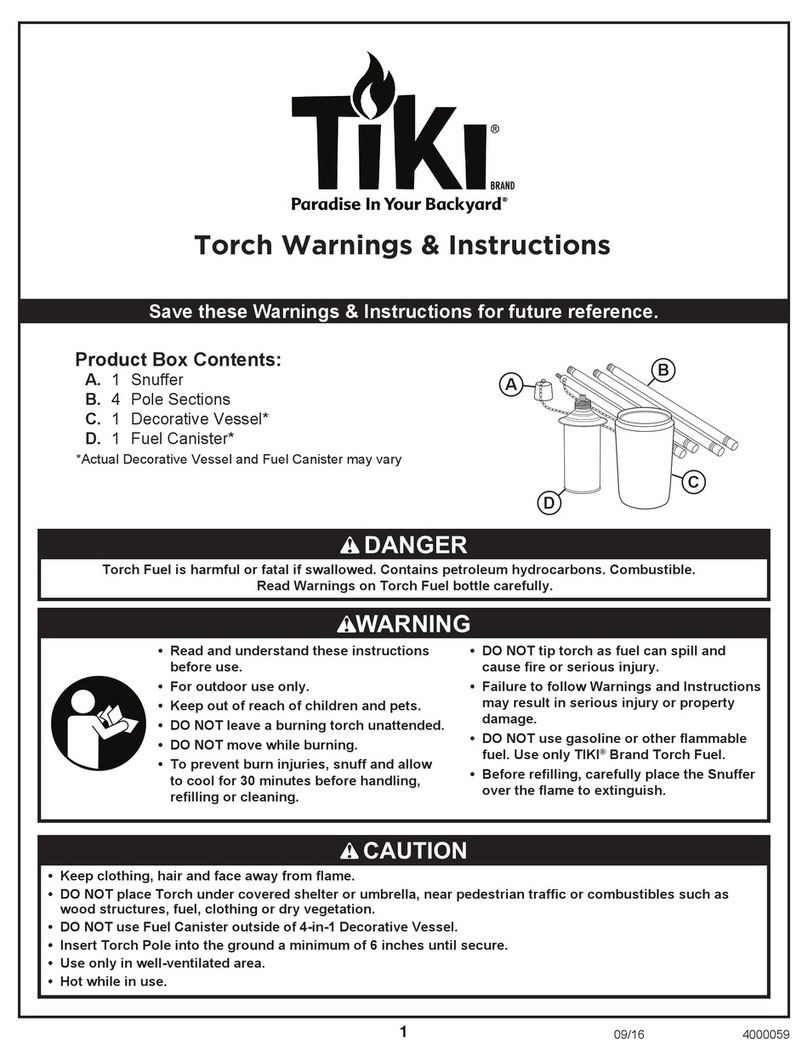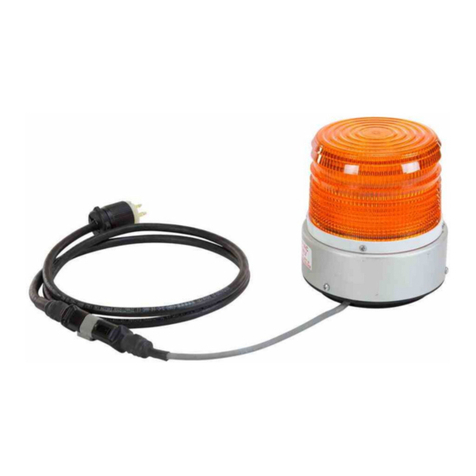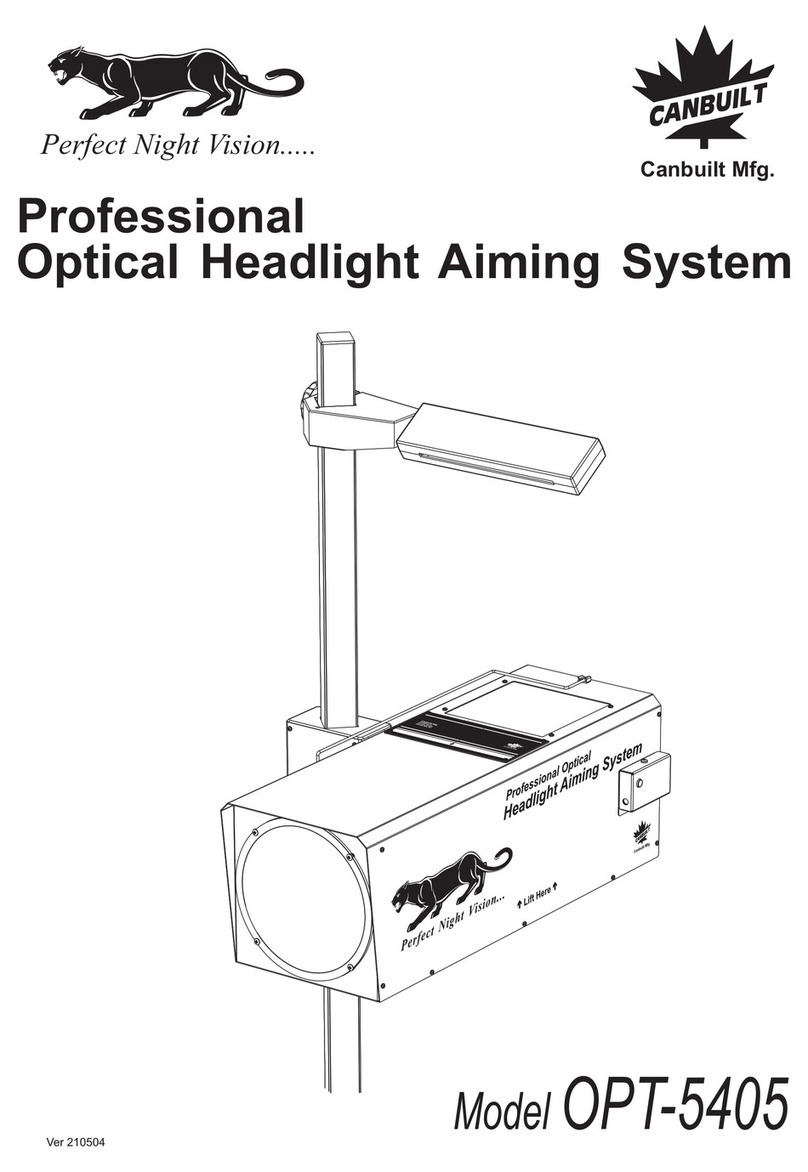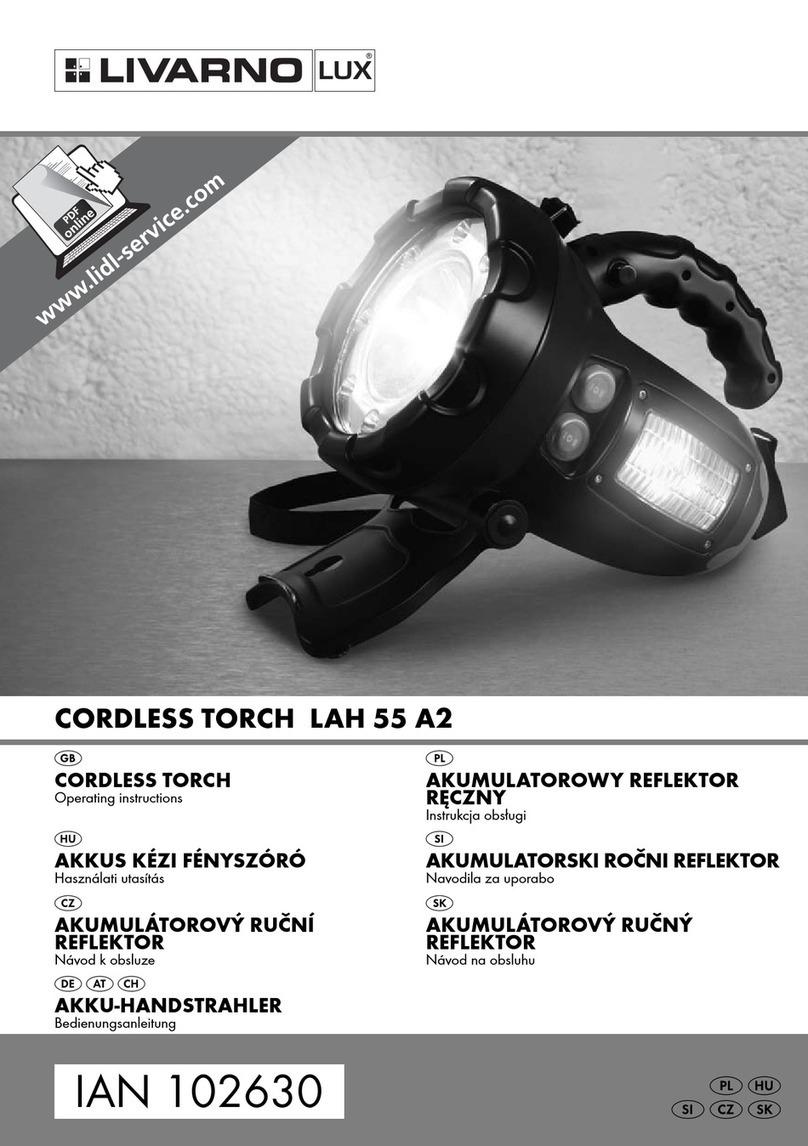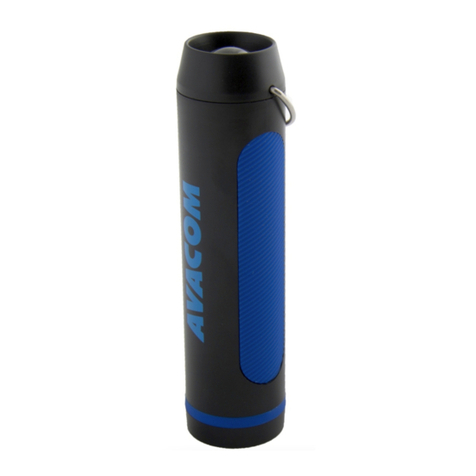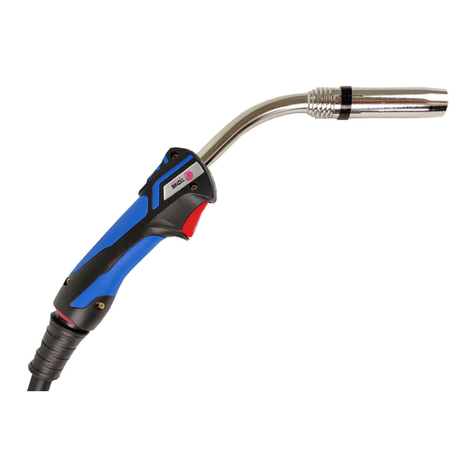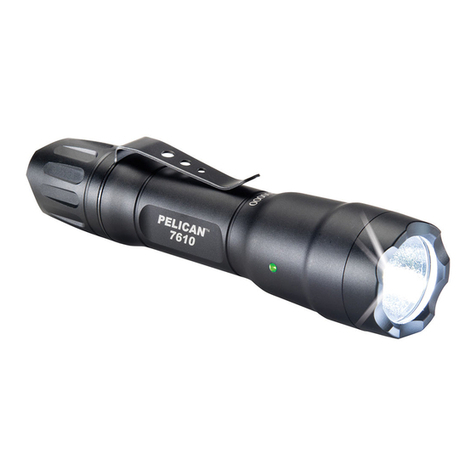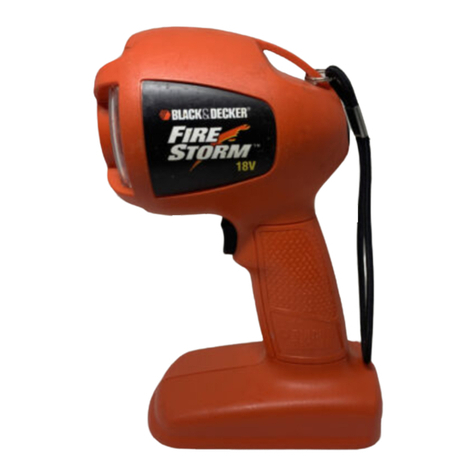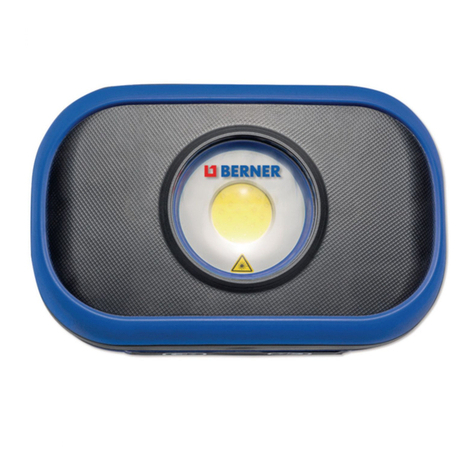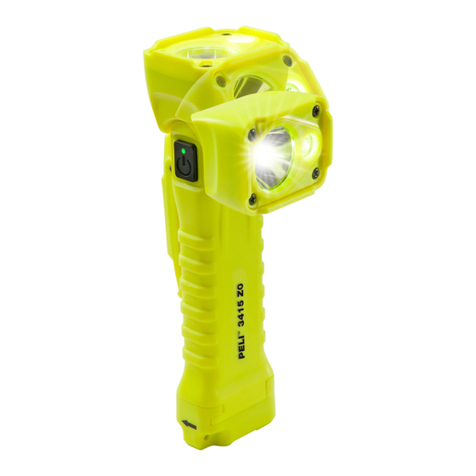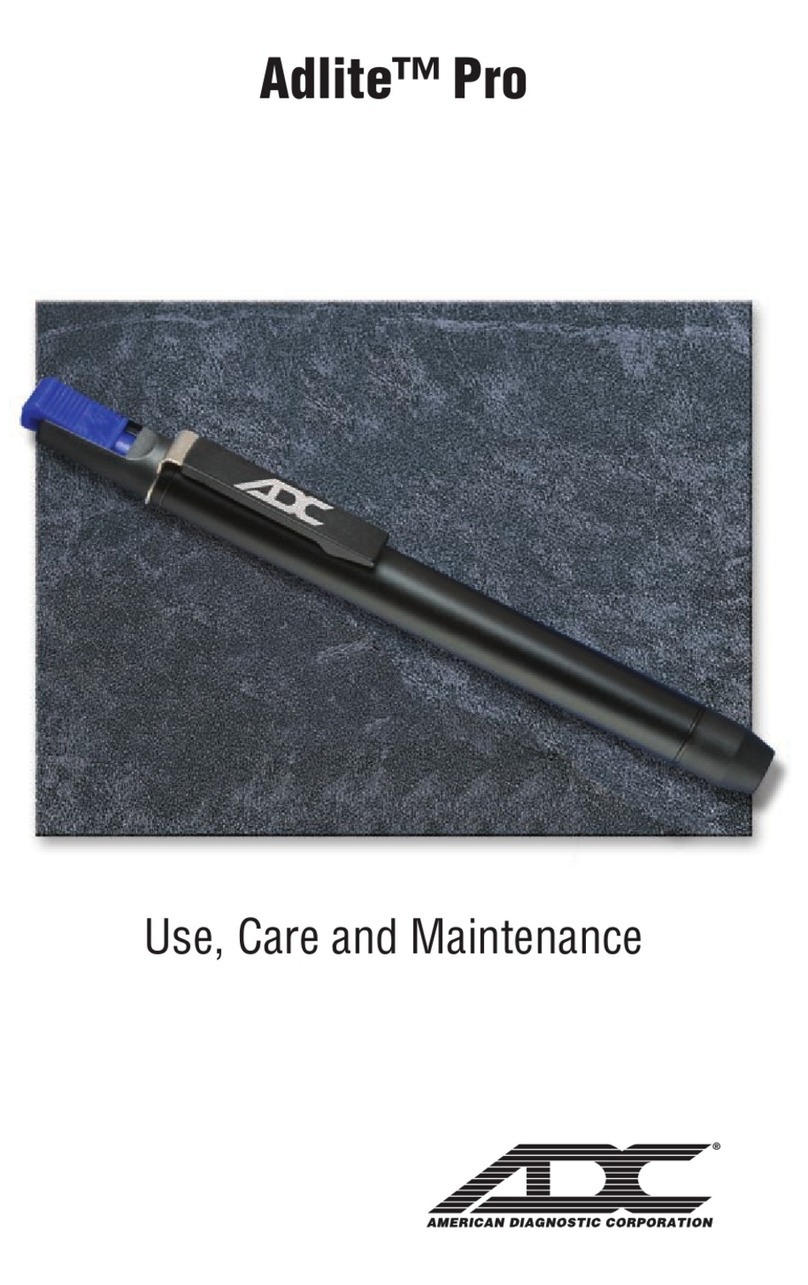Calibrating the Floor
0
9
8
7
6
5
4
3
2
1
Floor slope adjustment knob
Fig. 19
RECORDING THE FLOOR SLOPE SETTING
Near the floor slope adjustment knob , there is a
register consisting of a small cylinder that can be
used to count the turns of the knob . This register
sinks or raises with each turn of the knob (fig. 19).
Shops using the aimer in more than one location
should record the floor slope settings for each
location.
.
Use the recorded floor slope setting for subsequent
uses in the same location. Simply set the slope
adjustment knob to the previously recorded position
prior to aiming headlights.
ONCE THE SETTING IS RECORDED, IT IS NOT
NECESSARY TO TAKE THE FLOOR SLOPE
MEASUREMENT AGAIN FOR THIS LOCATION
Note: A decal is included with the aimer. You can record floor slope settings and adhere
the decal to aimer for reference. You can also use the matrix below for recording this
information.
BAY NUMBER REGISTER SETTING
REGISTER SETTING KNOB SETTINGKNOB SETTING DATE
Page 8 - Floor slope register
Canbuilt Mfg. Perfect Night Vision.....
